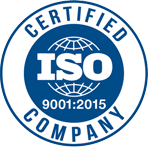Blog
Is It Time To Upgrade Your Industrial Control System?

Ask us, because we know.
If you pay attention to how a control panel is laid out on the inside then you won’t have a nightmare if and when you have to troubleshoot it later. We always desire to have a clean and well-organized control panel on their shop floor. Let RTS tell you the points we take into consideration to ensure that you get the best industrial control panel. We have been doing this for more than 30 years and we take pride in doing it right!
There are certain aspects to consider while fabricating a control panel:
- Design layout and component placement
- Labelling
- Panel size and spacing
- Wireway design
- Adherence to regulations
- Area specification
Design layout and component placement
Usually, it is common practice to locate the main incoming power disconnect switch and the components with the highest voltage rating at the upper right side of the panel. Since the chance of heat rising from the sensitive electronic components is high keeping them at a height makes better sense. And henceforth the components with lower power distribution to be laid out from left to right and top to bottom.
The idea is to keep the design consistent and functional and also it should be easy to troubleshoot, so a component hierarchy would facilitate that. Industry best practice suggests that you should start the power distribution components with the main breaker for that power level at the left, the distribution breakers, fuse and then terminals. Leave space between these distribution groups in case you would like to expand in the future to add additional capabilities.
Below the power distribution components, you most often will find racks for the input/output and PLC. Bring in the input/output wiring from the field instruments from the bottom. Proper design considerations should be taken to ensure that there is a way to exhaust the excess heat generated during the process.
Crisp and clear labelling
Labelling the components is the next thing you could do which would make your task easier if and when you need troubleshooting. The best practice is to maintain clearly visible syntax and names. In the wire for panel distribution that connects to a power terminal, there should be a mention of the terminal number.
For all the other wirings corresponding line numbers should be mentioned as per the layout. And for the PLC I/O, the syntax should be mentioned on each wire along with their PLC address. Industry-standard abbreviation prefix that should be mentioned for the panel components which should be followed by the line number.
Choosing the right panel size and space between components
Think about it, you would like a system with maximum possible uptime, and even when a problem arises the troubleshooting process should be as quick and easy as possible. How do we achieve this? By taking the following into consideration:
- Spacing between integrated components which allows efficient heat dissipation
- There should be room left in case there is a plan for future modification/addition of components. This will also leave space for heat dissipation
- Enough vertical room should be left to tuck wires into the terminal boxes properly
- At the bottom, space should be left for any extra field wiring
- Adherence to proper grounding and fusing procedures
- Secure wiring, most importantly taking care of loose terminations
Wireway design
The right type and amount of wireway is a sign of good design. Enough room should be left for panel wiring and field I/O wiring to be directed to the I/O terminals. It should allow to easily terminate the wiring to internal panel components. The wires should have enough space to allow future modifications and the labelling should be easy to identify. Wireway should be such that each I/O wire can be brought to its respective I/O terminal and there should be enough space for future additions.
Adherence to regulations
We strictly abide by the regulations defined by CSA & UL 508A*. For instance, all the wire terminations should be tightened to a specified Nm(Neuton-meter) with industry-calibrated drivers, a practice that we follow. Regulatory bodies have charted out certain criteria, including specified standards and listings, which an industrial control panel should meet before being put to work.
*CSA stands for Canadian Standards Association and is responsible for establishing norms in the Canadian market.
*UL stands for Underwriters Laboratory, and they are responsible for establishing the norms for the US market. These certification marks tell the customers that they have been evaluated by a following a formal process involving examination, testing, and follow-up inspection. It assures the user that the panel complies with the applicable standards for safety and performance.
Area specification
Consideration is to be given to the area, like hazardous or explosion-proof, in which the panel has to be installed.
RTS Consulting – Automation has an ISO-certified in-house panel shop where our designers, engineers, and fabricators take special care to adhere to these guidelines. As we mentioned before we have been doing this for more than 30 years, so trust us we must be doing something right.
Have a question or a project? Talk to our experts.
